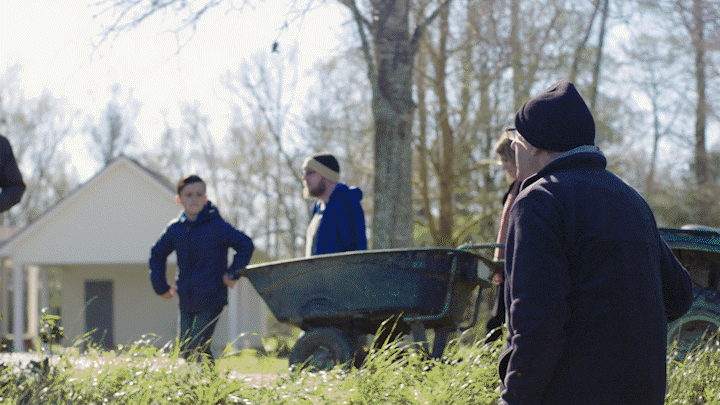Creating a Story Arch For Corporate Storytelling
Persuasion – the act of causing people to do or believe something.
Storytelling – the art of using language, vocalization, and imagery in a narrative to engage an audience or making something more clear.
Let’s be honest… How many corporate videos have you sat through that were truly inspiring? That made you feel something so overwhelming, and you were so energized, you felt like you could take on the world? Or perhaps so moving, you literally cried in the meeting watching it? I’m making a bet that it’s not often.

Convincing customers about your services & products, and or persuading employees to buy into corporate strategies is a big part of creating a corporate narrative. Despite this, many of the videos that we watch at this level are less than inspirational, many times getting lost in jargon, slideshows, or other less than inspirational presentations.
So how do we change this? What makes a great story? How do you create a corporate video or advertisement that really connects with the audience? We’ve already given you some ideas for Non-Profits and Animation, but honestly the devil is in the details.
*** On a quick note, every once in a while there are companies that are just natural storytellers. We’re been big fans of Duolingo if you’re looking for inspiration and we highly recommend their youtube channel. ***
Now back to our story…
One big detail that can be easily overlooked is creating and understanding a story or narrative arc.
What is this you ask?
A story (or narrative arc) is the structure of a story that describes the shape or change of the main course of the narrative.
A few examples of this are:
- Rags to Riches – where there is just one movement of the story – which is a steady climb throughout – leading to a happy ending.
- Riches to Rags – exactly the same as the above but in reverse
- The Icarus Arc – in which the movement is a rise and fall, taking from an ancient story of a boy who escaped imprisonment with wings made of wax – who eventually falls into the sea after flying too close to the sun.
To take this a bit further, one of the most popular story frameworks is something called the Hero’s Journey.
This particular storytelling framework has been used in more TV shows and movies than you can imagine, and with some adjustments, it can work wonderfully for brands and corporations wanting to create engaging and powerful videos.
Here is a breakdown of the main components of the framework below:
The Hero
- The Protagonist, The Hero, The Heroine. They can go by many names but for you they are your customer. After all, you need them to buy your product, service, or donate to your cause. So the story is for them, not for you.
Has a Desire
- Your Hero desires something and they may or may not know it yet. After all, they are living in their ordinary world without you, and this video is your chance to bring them outside your ordinary world and into your extraordinary one.
Has a Problem
- They have been unable to achieve that desire. They are stuck and need help.
The Wise Guide
- You are the guide that will help them overcome their problem and achieve their desire.
The Solution
- As the wise guide you provide the hero with tools and/or the ability to solve the problem. These tools could be your product, your service or the knowledge you have.
Changes Course
- With these tools your hero (customer) can now change the course and solve their problem and achieve their desire.
Resolution – Achieves Desire
- The customer is happy because they have achieved what they wanted.
So how do you use the above? If this is new exercise, understand that this will require creative focus and dedication. You’re going to want to literally write out each step, based on this framework.

Here is an example of a Rosetta Stone Campaign we created to help French Language Learners find ways to learn and practice french in their own regions of the U.S.
Hero
- A french language learner
Desire
- They desire to become better at speaking french and want to be immersed in the culture.
Problem
- They know going to France would be the best place to learn, but it’s expensive and far away.
Wise Guide
- We happen to be Rosetta Stone, not only can you learn a language from your home, but we show the language learner how they can speak french and experience french culture right here in the states – specifically in French Louisiana.
Solution
- The Hero realizes there are French speakers, cultures, and learning opportunities accessible to them.
Changes Course
- The hero finds communities and experiences that allow them to grasp French more easily.
Resolution
- The hero – aka your customers problem has been resolved, and they’re happy… woohoo!!!
Now how easy was that? If you’rve got a good story idea brewing, give this creative exercise a try. We’re hoping this helps you create bold, new, and compelling stories for your projects – but if you’re having trouble, get hold of us!


